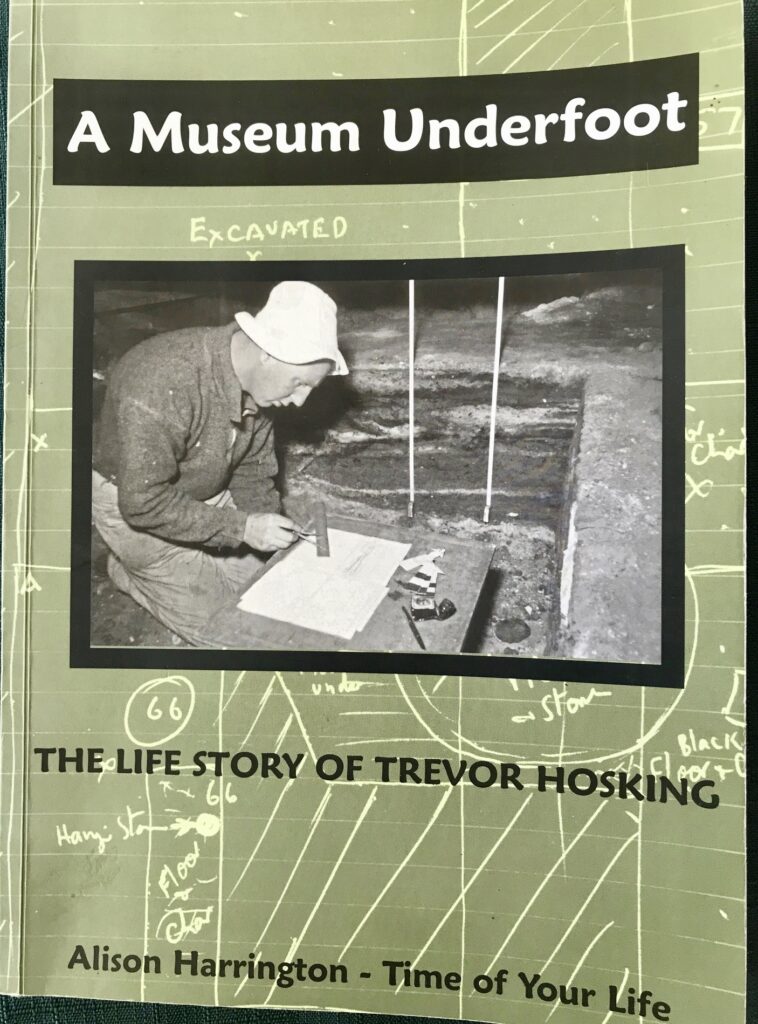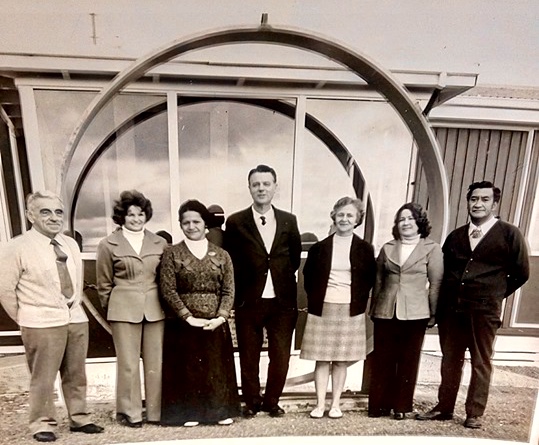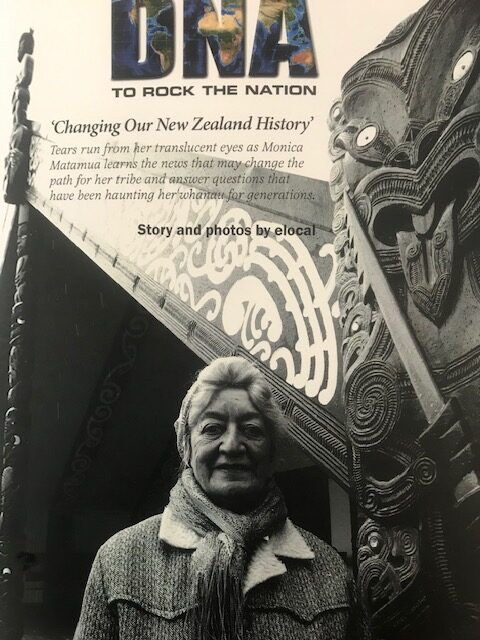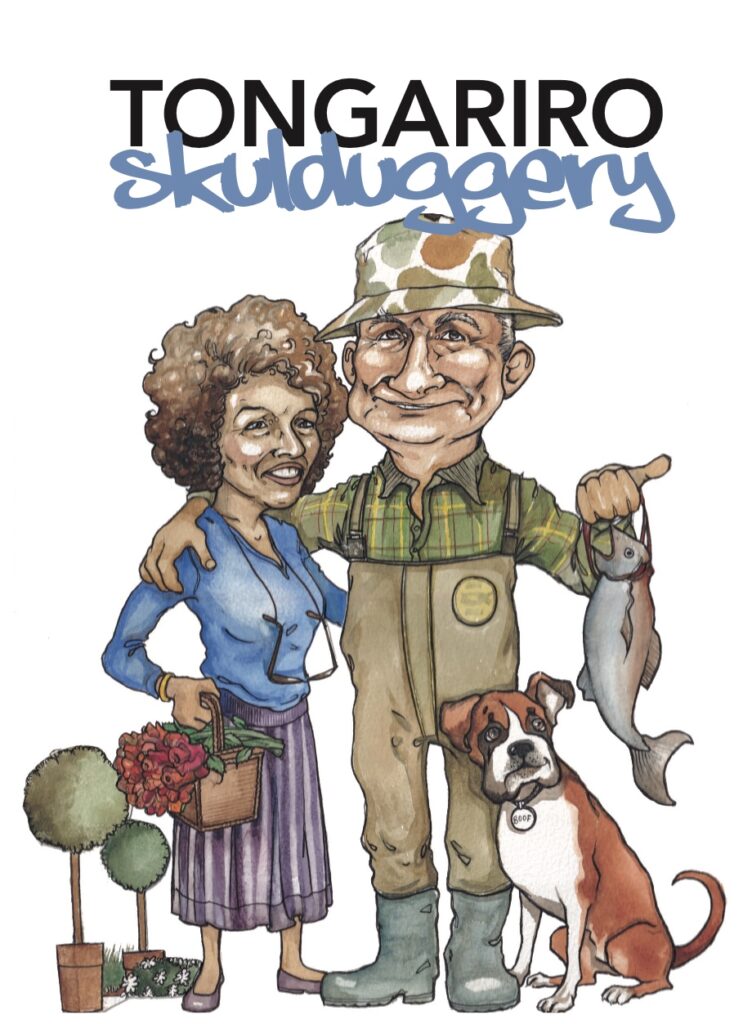This blog is all about “fishing for the truth“…

On 15 October the TRM fb blog ran a post from Sue Reyland. She wrote “An unpalatable truth provides lots of NZ history to consider and compare to the NZ Government version”. TRM’s mockumentary, TONGARIRO Skulduggery, might claim to be fiction, but so much of it is true… She provided the photo below.

TRM’s editorial committee was astounded at your huge response. A few comments refuted the claims but many more posed questions, which confirmed the high level of interest in this historical matter.
This reply is to briefly explain Turangi’s role in providing irrefutable physical evidence to satisfy the wider genuine interest in NZ history from the pre-Maori era.

TRM responded: “Our original interest was sparked by the Turangi Museum, which displayed one of the most significant ‘pre-Maori’ collections in NZ, revealed from the 1970s hydro canal excavations at Tokaanu. It generated huge interest, providing irrefutable physical evidence of occupation dated about 400 AD – i.e. 800 years before the Maori fleets arrived. The MOW files confirm their contractors excavated 16 villages, 246 dwellings, 20 burial sites, 71 skeletons and numerous artefacts. So we were convinced. But as soon as the MOW (Ministry of Works) left town, the museum was closed and the collection disappeared. How strange?”
Many of the other pre-Maori claims have been subject to disbelief, but the authenticity of the more recent Turangi findings appears indisputable. The discoveries from the deepest excavations on the hydro canal in front of the Tokaanu Power Station leading to Lake Taupo were reported in the interesting book, “A Museum Underfoot”.
This was a chapter of the life story of Trevor Hosking, who had been appointed by MOW (Ministry of Works) as the official site archaeologist. He received a GG’s award for his discoveries and for setting up the exhibits for display in the Turangi museum. Many years ago, I visited that museum, so I can confirm they were real! This blog is to elaborate on that reply.

Over the last year the original Info centre and museum have been demolished. The photo above is the original staff standing at the entrance, arched by a section from the power station tailrace pipes. The museum was so popular the car park had to be extended to accommodate busloads of interested tourists. That is why it was so curious for the Taupo Council to close the museum. Perhaps it was too popular, competing with the Taupo Museum? Then all the valuable historical exhibits went missing. A local lady confirmed her last job for the MOW was to chronicle all the exhibits. That schedule has also disappeared.
To quote from TONGARIRO Skulduggery (Page 21), Perhaps the most significant find for the Turangi Museum was on the Tongariro River at the confluence of the Poutu Stream, was a 45 cm club (mere or ceremonial adze) discovered by a schoolboy (Ray Parker). It was considered so valuable that the National Museum in Wellington had a copy made for public display. The original has since disappeared. It would have been worth many $thousands and would have been sought after by other museums or collectors. (The schoolboy was generously rewarded with an imperial crown)
The ceremonial stone mere had been carbon dated by the Dominion Museum around 400 AD. It was made of a type of stone only found near Takaka at the top of the South Island. This indicated that the early settlers – Moa hunters – were trading greenstone for kumara, over 800 years before the first migrations arrived in New Zealand from the Pacific regions.

More local suspicions were confirmed in the 2018 publication by Monica Matamua of attempts to justify her family history. Her wider family all have a pale complexion, blonde red hair, green-blue eyes, as physical proof of a different pre-Maori tribe who were hunted almost to extinction by Maori in the 14th century. They even spoke a different language.
In an excerpt written by Sir John Te Herekiekie Grace, the chief of the Tuwharetoa tribe, he confirmed her claim that “The original occupants of the land were a tribe of the fair skinned and flaxen haired people called Ngati Hotu”. She was seeking acknowledgement through the Native Land Courts and the Waitangi Tribunal that her tribe, Ngati Hotu, were the original inhabitants. Historians accept her claims but the Justice Department did not. Now the Government education policy is to not investigate any history before 1840. Why not? Surely, it is all beyond coincidence.

As this is supposed to be a fishing report, to maintain anglers’ interest, the excellent book KAKAHI by Peter McIntyre also recorded the same history of the Ngati Hotu tribe being almost annihilated by Tuwharetoa, as related to him by a village elder.
There were too many other coincidences for most readers to dwell on. That is why they were summarised in the shocking controversial “mockumentary,” TONGARIRO Skullduggery, published by TRM about five years ago. After receiving so much feedback, I felt obliged to elaborate on the article posted on TRM’s blog on 15 October, to provide a Turangi perspective.

